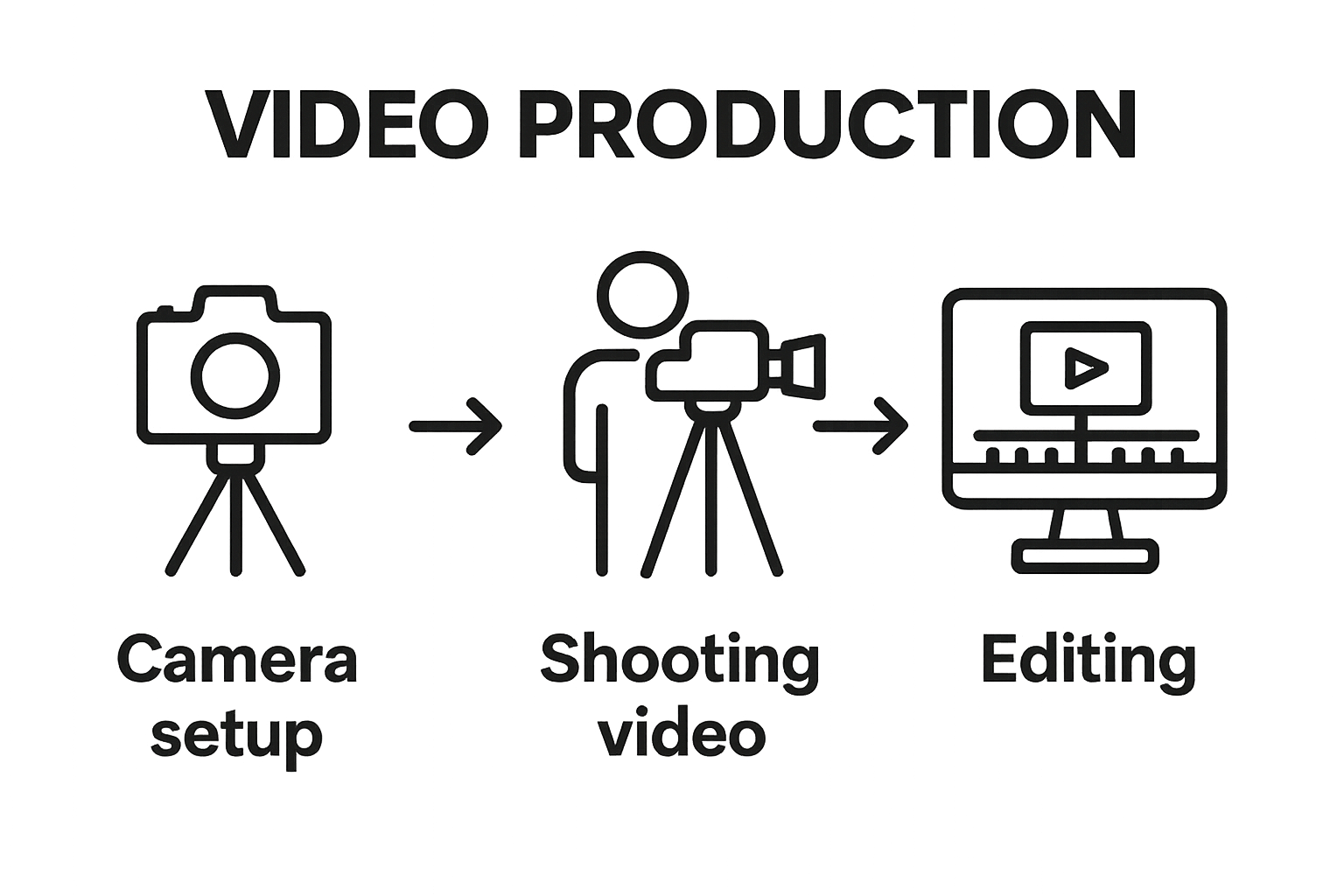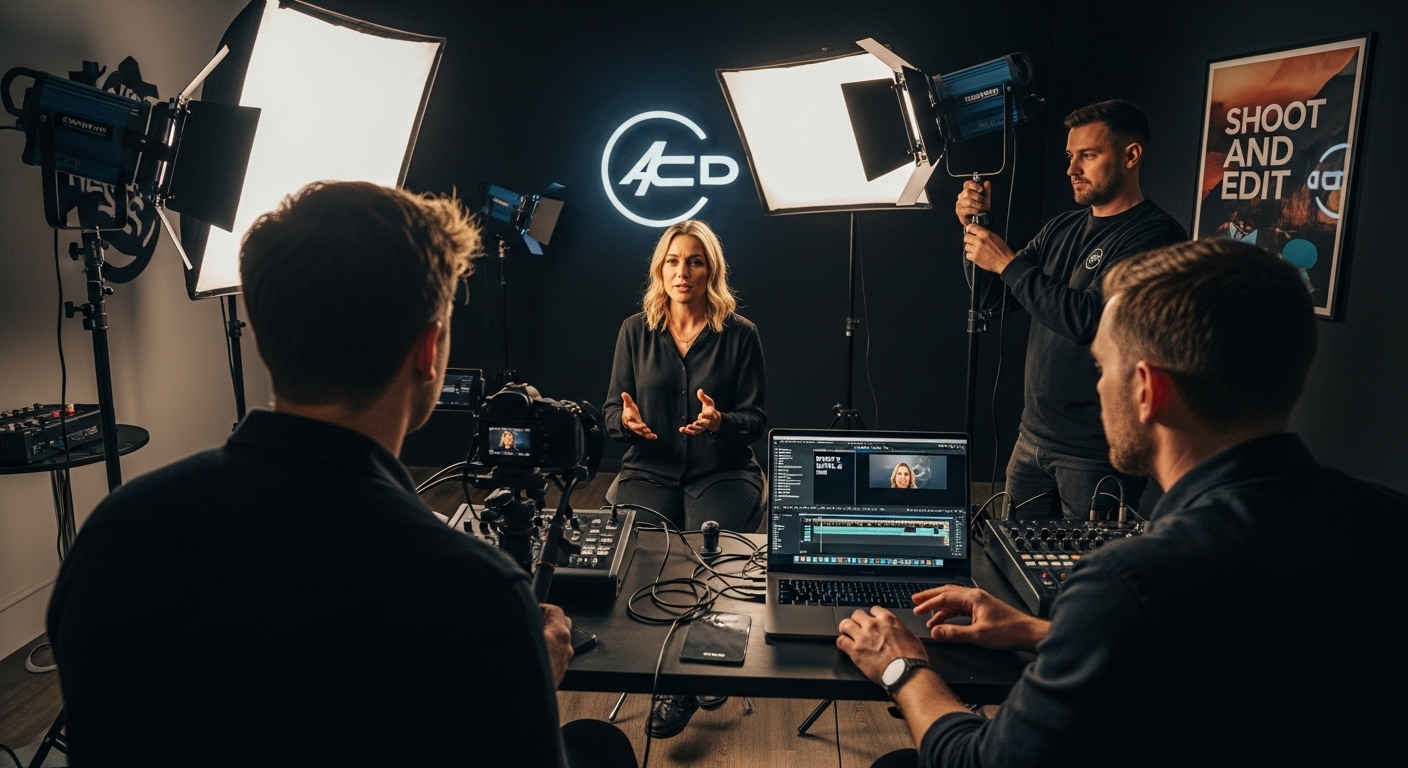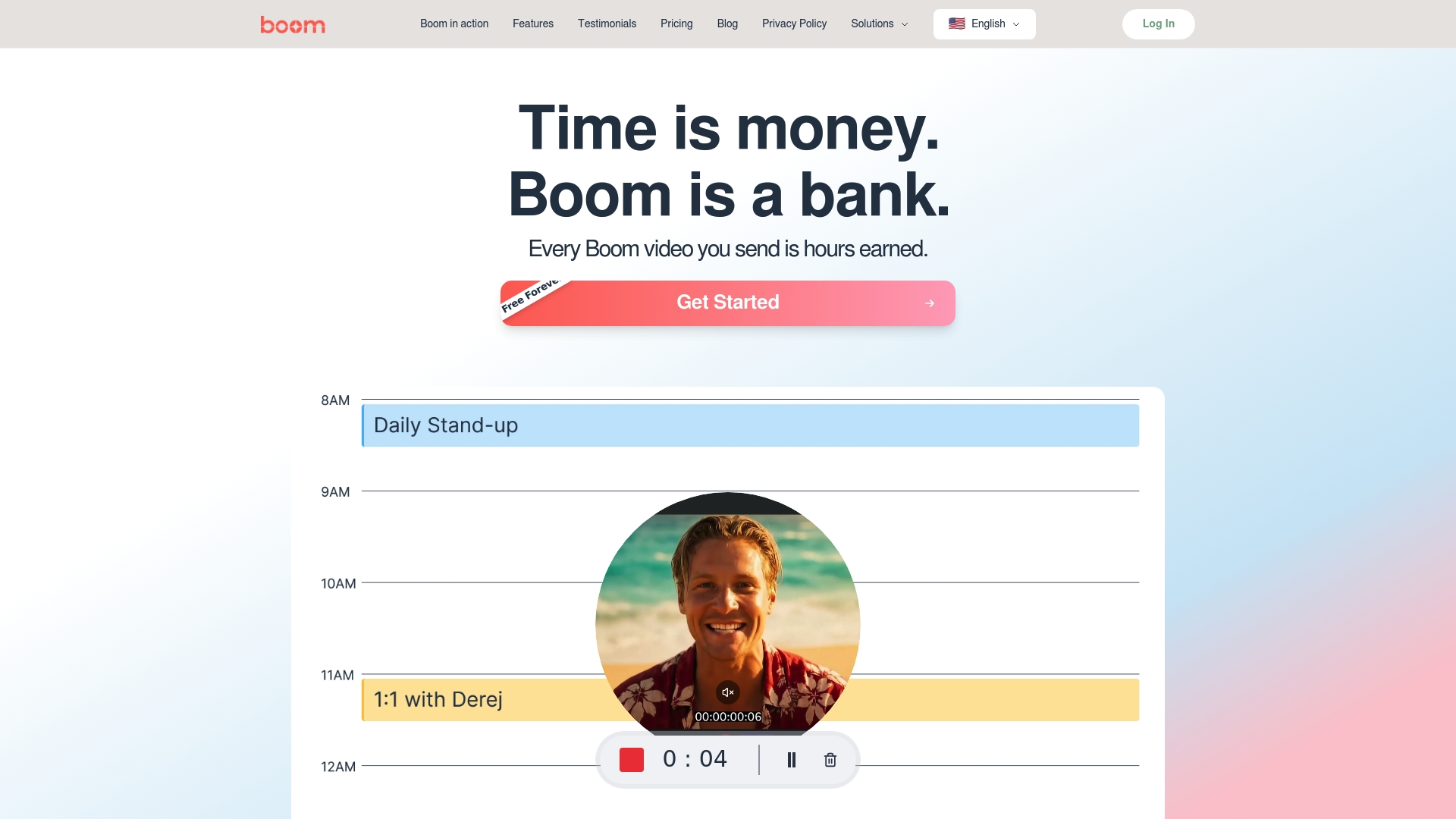How to Create Branded Videos That Engage Your Audience
Learn how to create branded videos step-by-step to enhance your brand identity and engage your audience effectively.
Devdeep
Author
How to Create Branded Videos That Engage Your Audience

Branded videos are everywhere and they grab attention instantly. Even so, most companies overlook the fact that over 80 percent of consumers remember a brand after watching just one engaging video. You might think a flashy logo or clever slogan is enough, but the real secret is building every video around your brand’s unique personality and goals. This approach turns forgettable clips into memorable stories that stick with your audience.
Table of Contents
Quick Summary
| Key Point | Explanation |
|---|---|
| 1. Define Brand Identity Clearly | Establish a strong foundation for your videos by understanding your brand's personality, values, and unique narrative. |
| 2. Conduct In-Depth Audience Research | Create detailed audience personas to uncover motivations, preferences, and content consumption habits for better video resonance. |
| 3. Develop a Strategic Creative Concept | Ensure video narratives authentically represent your brand while meeting the emotional and informational needs of your audience. |
| 4. Select Appropriate Equipment | Choose video and audio tools that align with your production quality needs without exceeding your budget. |
| 5. Plan Thorough Review and Testing | Use multi-stakeholder evaluations and audience testing to refine your video before launch, ensuring it meets strategic goals. |
Step 1: Define Your Brand Identity and Objectives
- Step 1: Define Your Brand Identity And Objectives
- Step 2: Research Your Target Audience And Preferences
- Step 3: Develop A Creative Concept And Script
- Step 4: Gather Equipment And Resources For Production
- Step 5: Shoot And Edit Your Branded Video
- Step 6: Review, Test, And Launch Your Video Content
Creating branded videos starts with a crystal clear understanding of your brand's core identity and strategic objectives. Before you record a single frame, you must establish a comprehensive blueprint that will guide your entire video creation process. This foundational step transforms random content into purposeful, resonant communication.
Your brand identity is more than a logo or color palette. It represents the personality, values, and unique narrative that distinguishes your organization from competitors. When developing branded videos, every visual and auditory element must authentically reflect this identity. Think of your brand as a living character with specific traits, communication style, and emotional resonance.
To effectively define your brand identity for video content, begin by conducting a thorough internal assessment. Gather key stakeholders and discuss critical questions: What fundamental message does your brand want to communicate? What emotional response do you want to evoke in your audience? What makes your brand unique in its industry?
Consider developing a brand personality framework that outlines specific characteristics. Are you professional and authoritative? Playful and innovative? Compassionate and supportive? These descriptors will directly influence your video's tone, script, visual design, and overall presentation. For instance, a tech startup might create videos with a dynamic, fast-paced aesthetic, while a healthcare nonprofit might prioritize warmth and empathy.
Objective setting is equally crucial. Your branded videos cannot be generic content but must align with specific marketing or communication goals. Are you aiming to increase brand awareness, drive product engagement, educate customers, or build community trust? Each objective demands a distinct video strategy.
Key objectives might include:
- Generating lead conversions
- Demonstrating product functionality
- Sharing customer testimonials
- Explaining complex concepts
- Building emotional connection with your audience
By meticulously defining your brand identity and strategic objectives, you create a robust framework that transforms video creation from a tactical task to a strategic communication tool. This preparation ensures that every video you produce becomes a powerful, authentic representation of your brand's unique story and mission.
Step 2: Research Your Target Audience and Preferences
Understanding your target audience represents the critical bridge between creating generic content and developing compelling branded videos that truly resonate. This research phase goes far beyond basic demographic information, diving deep into the psychological landscape of your potential viewers.
To begin your audience research, start by constructing detailed audience personas that capture more than surface level characteristics. These personas should explore not just age and occupation, but deeper motivational drivers, content consumption habits, pain points, and communication preferences. Think of these personas as comprehensive character sketches that reveal how and why your audience engages with video content.
Utilize multiple research methods to gather nuanced insights. Social media analytics platforms can provide rich behavioral data about your current followers. Surveys and direct interviews allow you to collect qualitative information about audience preferences. Online communities, forums, and comment sections become unexpected goldmines of genuine audience perspectives and language.
Pay special attention to content consumption patterns. Different audience segments have dramatically different video preferences. Younger audiences might gravitate toward quick, visually dynamic content with rapid scene transitions, while professional audiences may prefer more structured, information dense presentations. Understanding these subtle variations prevents creating videos that miss their mark.
Technology and platform preferences also matter significantly. Some audiences consume most video content on mobile devices, demanding vertical video formats and subtitles. Others prefer longer form content on desktop platforms. Your research should reveal these critical viewing context details.
Key audience research focus areas include:
- Preferred video length and format
- Primary content consumption platforms
- Emotional triggers and motivational factors
- Technical accessibility requirements
- Language and communication style preferences
Successful audience research transforms your branded video strategy from guesswork into a precision instrument. By deeply understanding who your viewers are, what they want, and how they consume content, you create videos that do not just communicate information but forge genuine connections. This step ensures your subsequent video production will speak directly to your audience's specific needs and expectations.
Step 3: Develop a Creative Concept and Script
Transforming your brand strategy into a compelling video narrative requires a thoughtful, strategic approach to concept development and scripting. This critical phase bridges your brand identity and audience insights, creating a powerful storytelling framework that captures attention and drives engagement.
Begin by brainstorming creative concepts that authentically represent your brand while speaking directly to your audience's interests and needs. Your concept should be more than a simple message delivery mechanism it must be a narrative experience that creates emotional connection. Consider storytelling approaches that reveal your brand's unique personality, whether through humor, inspiration, education, or personal testimonial.
Script development demands precision and intentionality. Your script is the skeleton that supports your entire video production, guiding every visual and auditory element.
Start by clearly defining your core message the single most important takeaway you want viewers to remember. This central idea will anchor your entire narrative and prevent meandering or unfocused content.
Structure your script with a clear narrative arc that mirrors classic storytelling principles. Begin with a hook that immediately captures viewer attention, develop a compelling middle that explores your key message, and conclude with a strong call to action that motivates viewer response. Every sentence should serve a specific purpose advancing your narrative or reinforcing your brand message.
Pay careful attention to your script's language and tone. The words you choose must align perfectly with your brand personality and resonate with your target audience. A tech startup might use dynamic, innovative language, while a healthcare provider would prioritize compassionate, clear communication. Your script's voice should feel like a natural extension of your brand identity.
Key script development considerations include:
- Maintaining concise, engaging language
- Balancing information with emotional resonance
- Creating a natural, conversational flow
- Ensuring clarity of message
- Incorporating strategic pauses and emphasis
According to video marketing experts, a well-crafted script transforms raw information into a memorable storytelling experience. By meticulously developing your creative concept and script, you create a powerful foundation that will guide your entire video production process, ensuring that every frame serves your brand's strategic objectives.
Step 4: Gather Equipment and Resources for Production
Preparing for video production requires strategic equipment selection that balances quality, budget, and technical complexity. The right tools can dramatically elevate your branded video from amateur to professional, transforming your creative vision into a compelling visual narrative.
Begin by evaluating your specific production needs through the lens of your brand identity and target audience expectations. Professional quality does not necessarily mean expensive equipment. Many creators achieve remarkable results with modest, strategically chosen gear that matches their specific storytelling requirements.
For video recording, consider a range of options from smartphone cameras to dedicated digital cameras. Modern smartphones offer impressive video capabilities, with many flagship models producing 4K resolution footage. If you are creating more complex productions, invest in a digital camera with strong low light performance and interchangeable lenses. The key is selecting equipment that provides consistent, high quality visual output aligned with your brand's aesthetic.
Audio quality represents another critical production element often overlooked by novice creators. External microphones provide significantly superior sound compared to built in camera audio. Consider lavalier microphones for direct, clear speech capture or shotgun microphones for broader environmental sound recording. Wireless microphone systems offer flexibility for more dynamic video shooting scenarios.
Lighting equipment transforms video production quality. Professional lighting does not require massive studio setups. Portable LED panels, ring lights, and softbox lighting can create professional illumination in almost any environment. Natural light remains an excellent free resource when used strategically.
Here is a summary table of essential equipment and resources for branded video production, including each item\'s purpose for clarity and quick reference.
| Equipment/Resource | Purpose |
|---|---|
| Camera or Smartphone | Captures high-quality video footage aligned with brand needs |
| External Microphone | Ensures clear, professional audio recording |
| Portable Lighting | Provides consistent, professional illumination |
| Stable Tripod/Mount | Stabilizes camera for smooth, steady shots |
| Video Editing Software | Edits and polishes footage to create cohesive final videos |
Essential production resources include:

- High quality camera or smartphone
- External microphone system
- Portable lighting equipment
- Stable tripod or mounting system
- Basic video editing software
According to video production experts, successful equipment selection depends on understanding your specific project requirements. By carefully matching your gear to your creative concept, you create a production toolkit that enhances your storytelling capabilities without unnecessary complexity or expense.
Step 5: Shoot and Edit Your Branded Video
The shooting and editing phase transforms your meticulously planned concept into a tangible, engaging visual narrative. This critical stage requires a combination of technical skill, creative vision, and strategic brand alignment that turns raw footage into a compelling branded video.
During the shooting process, maintain unwavering focus on your original creative concept and brand identity. Every frame should reflect the narrative and emotional tone established in your earlier planning stages. Approach each shot with intentionality, considering composition, lighting, and how each visual element reinforces your brand's core message.
Consistent performance and multiple takes become crucial during shooting. Professional creators understand that capturing the perfect sequence often requires patience and repetition. Record more footage than you anticipate needing, providing yourself flexibility during the editing process. Capture alternative angles, variations in performance, and supplementary b roll footage that can enhance your final video's visual richness.
Video editing represents the alchemical process of transforming raw footage into a polished, engaging narrative. Begin by organizing your recorded material, reviewing each segment critically and selecting the most impactful moments. Your editing should maintain a precise rhythm that keeps viewers engaged while clearly communicating your core message.
Brand consistency demands meticulous attention to visual details. Incorporate your brand colors, typography, and logo treatments seamlessly throughout the video. Color grading can help establish a cohesive visual language that immediately identifies the content as uniquely yours. Transitions, graphics, and visual effects should feel like natural extensions of your brand's aesthetic rather than disconnected elements.
Critical editing considerations include:
- Maintaining precise pacing
- Ensuring visual and audio quality
- Incorporating brand visual elements
- Creating smooth narrative flow
- Keeping viewer engagement high
According to video production research, effective editing is not just about technical precision but about crafting a storytelling experience that resonates emotionally with viewers. By approaching shooting and editing as a holistic creative process, you transform raw footage into a powerful branded communication tool.

Step 6: Review, Test, and Launch Your Video Content
The final stage of branded video production combines meticulous review, strategic testing, and purposeful launch planning. This critical phase ensures your carefully crafted video meets brand standards, resonates with your target audience, and achieves your defined marketing objectives.
Comprehensive review begins with a multi stakeholder evaluation process. Gather feedback from team members representing different perspectives marketing, creative, technical, and strategic departments. Each reviewer should assess the video against specific criteria: brand alignment, message clarity, visual quality, emotional impact, and potential audience engagement.
Technical review involves examining video elements with forensic precision. Check video and audio quality across multiple devices and platforms. Verify that resolution, color grading, sound levels, and compression maintain professional standards. Subtitles or closed captions should be accurately synchronized and formatted, ensuring accessibility for diverse audience segments.
Audience testing provides invaluable insights before broader distribution. Consider conducting focused group screenings or using online testing platforms that offer detailed viewer feedback. These tests reveal how different audience segments perceive and interact with your video. Pay close attention to viewer retention rates, emotional responses, and whether the video effectively communicates your intended message.
Launch strategy requires careful platform selection and distribution planning. Different platforms demand unique optimization approaches. A video designed for LinkedIn professional audiences will require different formatting and approach compared to an Instagram or YouTube release. Develop platform specific versions that maintain your core message while adapting to each channel's technical and cultural nuances.
Key launch preparation considerations include:
- Preparing platform specific video formats
- Creating accompanying marketing copy
- Scheduling strategic release times
- Planning cross platform promotion
- Setting up tracking and analytics
According to digital marketing research, successful video launches are not about perfect execution but about strategic flexibility and continuous learning. By approaching your video release as a dynamic, iterative process, you create opportunities for real time optimization and audience engagement.
This checklist table outlines key review, testing, and launch steps to verify your video is complete, on-brand, and ready for optimal distribution.
| Launch Preparation Step | What to Check/Do |
|---|---|
| Multi-Stakeholder Review | Gather feedback on brand alignment, clarity, and impact |
| Technical Quality Check | Examine video, audio, and caption quality on multiple devices |
| Audience Testing | Collect viewer feedback and retention metrics |
| Platform-Specific Formatting | Prepare video versions tailored for each platform |
| Scheduled Release | Plan and schedule launch for maximum engagement |
| Cross-Platform Promotion | Coordinate promotional efforts across channels |
| Analytics Setup | Ensure tracking is in place for performance monitoring |
Ready to Create Effortless, On-Brand Videos?
Do you feel overwhelmed by the technical hurdles, endless revisions, and scheduling nightmares described in this guide on making engaging branded videos? You work hard defining your brand and crafting scripts that connect. Yet traditional tools still steal your time and make it hard to keep every video truly on-brand, especially when teams or clients need asynchronous clarity.
With Boom, you skip these pain points entirely:

- Instantly script, record, and brand videos that match your core message and identity
- Remove the friction of scheduling and collaborate without waiting for a meeting invite
- Stay consistent, concise, and ready to impress—all with AI-powered async tools
Try Boom’s async video platform now and experience what it means to save hours per week while creating videos that reflect the precise goals and narrative you care about. Give your team or personal brand the tools to ditch meetings, engage your audience, and launch faster—all for free. Visit Boom and start earning your time back today.
Frequently Asked Questions
What is the first step in creating branded videos?
The first step is to define your brand identity and objectives. This involves understanding your brand's core identity, its values, and strategic goals to ensure your videos align with your brand's message.
How do I research my target audience for branded videos?
Researching your target audience involves creating detailed audience personas that look into their motivations, content consumption habits, and preferences. Utilize analytics, surveys, and online community insights to gather this information.
What should I consider when developing a script for my branded video?
When developing a script, focus on your core message, maintain engaging and concise language, and ensure it aligns with your brand personality. Structure it with a clear narrative arc to effectively communicate your message and enhance viewer engagement.
What equipment do I need to produce a high-quality branded video?
To produce high-quality branded videos, you’ll need a reliable camera or smartphone, an external microphone for better audio quality, and lighting equipment. Additionally, a stable tripod and basic video editing software are essential for achieving professional results.
Recommended
About the Author
Devdeep
Senior Software Engineer.
